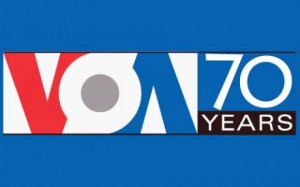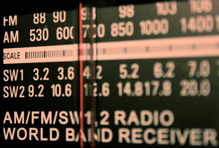This is a great opportunity to communicate directly with a BBG member who wants your input regarding upcoming changes to US international broadcasting:

(Source: BBG Watch)
Often referred to as a senior Republican member of the Broadcasting Board of Governors (BBG), Ambassador Victor Ashe has invited the public, including BBG employees and contractors, to send comments to his personal email address, Send an e-mail to BBG member Victor Ashe, on the controversial plan to merge BBG-managed Radio Free Asia (RFA), Radio Free Europe/Radio Liberty (RFE/RL), and Middle East Broadcasting Networks (MBN) into a single administrative unit.
Ashe has become a champion of transparency and raising employee morale at the federal agency which oversees U.S. international broadcasting. He is one of nine members serving on the bipartisan Board. In the absence of Michael Lynton, the BBG’s interim presiding governor, the meeting in Miami was presided over by Governor Dennis Mulhaupt. Governor Dana Perino was also absent. Both Lynton and Perino have a poor attendance record at BBG meetings. Lynton is a Democrat. Mulhaupt and Perino are Republicans.
While the open meeting of the Board on Friday at the headquarters of Radio and TV Marti in Miami, Florida, was chaired by Governor Mulhaupt, Governors Victor Ashe and Michael Meehan clearly dominated the discussion. On-demand video and audio from the meeting is available on the BBG official website.
Ashe called attention to a number of unresolved issues in the proposal to merge the publicly funded surrogate broadcasters who get their grants from Congress through the BBG. He expressed concerns about the lack of information on the selection and the authority of the CEO for the new merged entity. Ashe warned that rushing to implement the plan in its current form may damage U.S. international broadcasting and said that he would oppose the idea of selecting a CEO for the proposed entity as early as next month.
[…]Ashe also announced that Edward R. Murrow’s only son, Charles Casey Murrow, will participate in the the rededication ceremony at the BBG Edward R. Murrow Transmitting Station in Greenville, North Carolina, in honor of the renowned broadcaster and director of the USIA (1961-1964) and in recognition of World Press Freedom Day. Ashe and Congressman Walter Jones (R – NC) also plan to attend the event. The BBG and IBB executive staff wanted to close down the facility, but Ashe insisted that the only remaining shortwave transmitting station on U.S. territory remain open.
During the meeting in Miami, BBG governors also stressed the importance of U.S. broadcasting to Latin America, but it is not clear what they plan to do about their FY 2013 budget proposal to eliminate several positions in the Voice of America Spanish Service. There was no mention at the open meeting about the FY 2013 budget proposal to eliminate dozens of VOA newsroom and English broadcasting positions and cuts and reductions in other VOA programs, including VOA Georgian, Turkish, and Greek broadcasts.
Read the full article at the BBG Watch website.



 (Source: Voice of America Press Release)
(Source: Voice of America Press Release) (Source:
(Source: 